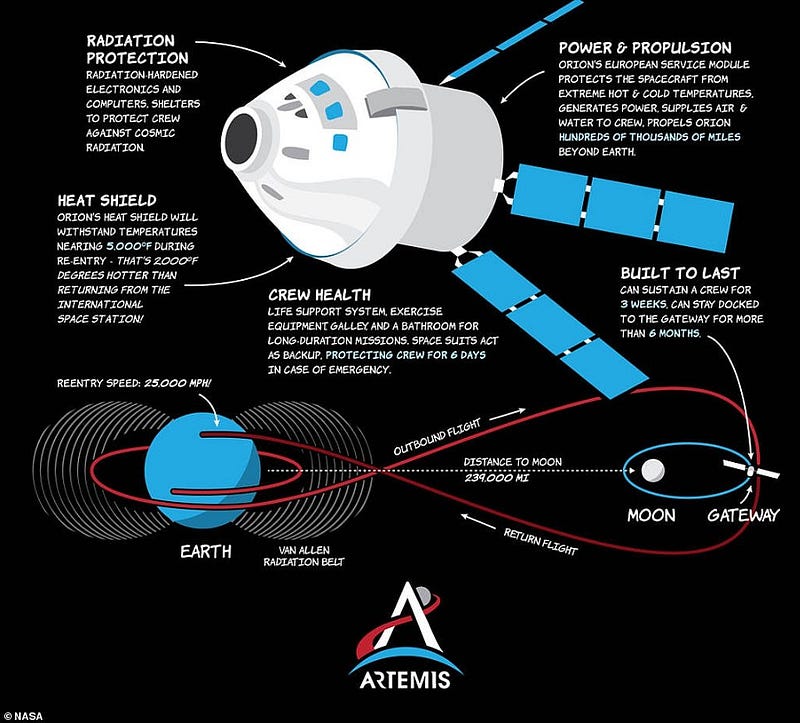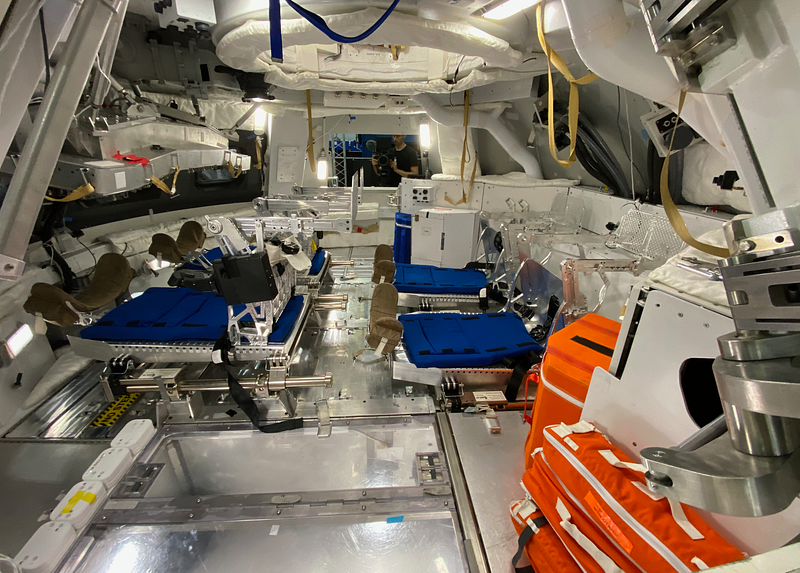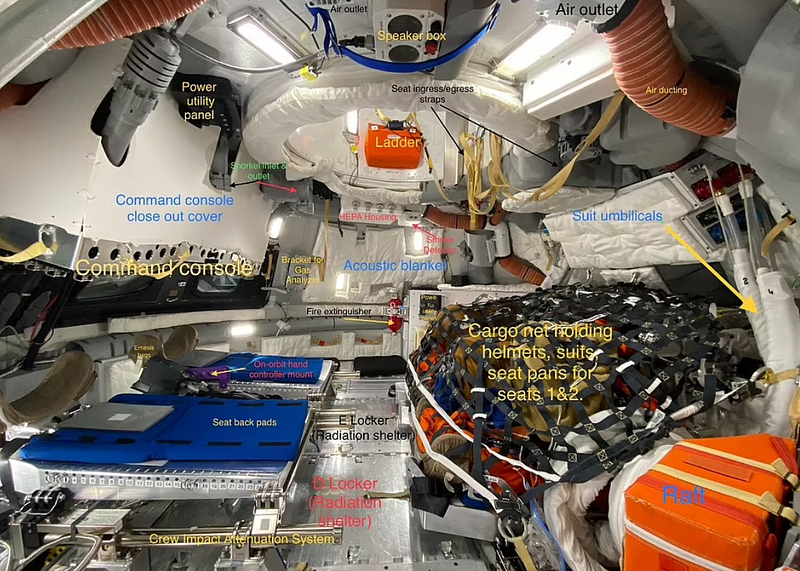Exploring Artemis: Inside NASA's $18 Billion Lunar Spacecraft
Written on
Chapter 1: Distance and Challenges of Lunar Travel
The journey from Earth to the Moon spans approximately 239,000 miles. To put this into perspective, it would take ten continuous 45-hour flights around the globe to match that distance. However, unlike air travel, a lunar expedition introduces unique challenges such as exposure to radiation, space debris, extreme temperatures, lack of atmosphere, reduced gravity, dust exposure, communication lags, solar storms, and high-speed micrometeoroids.
Would you like to see my video on this topic? Here it is:
To shield astronauts from these dangers, NASA allocated approximately $25.4 billion for the Apollo mission launched on July 16, 1969. Adjusted for inflation, this figure equates to around $152 billion today, with Apollo 11 itself costing roughly $355 million, or about $2.4 billion in today’s dollars.
Where did this funding go? A substantial amount was directed towards the research and development of groundbreaking technologies such as the Saturn V rocket and the Lunar Module. The Saturn V, still the most massive and powerful rocket ever constructed, incurred costs near $1.2 billion today. Personnel expenses were also significant; the Apollo program employed over 400,000 individuals at its peak, including engineers, scientists, and technicians dedicated to ensuring mission success from launch to lunar landing and return.
Fast forward over 50 years since humans first set foot on the Moon, and you might assume that NASA's Artemis lunar spacecraft is vastly different from its 60s and 70s predecessors. You would be correct. Although Orion maintains the same conical design as the Apollo capsules, its interior features technology that was unimaginable during Neil Armstrong's historic lunar walk. Launched without a crew on November 16 last year, the Artemis spacecraft has exceeded $18 billion in development costs. Now, let's delve into the spacecraft to explore its advanced technology and astronaut comfort.
Orion is mounted on the 322-foot-tall Space Launch System (SLS) and consists of four main components: the Launch Abort System for emergency crew evacuation, the Crew Module where astronauts reside, the Service Module that offers propulsion, electrical power from solar arrays, and essential life support systems, and the Spacecraft Adapter that connects Orion to the SLS rocket.

Now, let’s examine the Crew Module more closely:


The habitable space within the spacecraft measures 316 cubic feet and accommodates four astronauts instead of three, with adjustable seating designed to fit a wide range of body types—up to 99% of them, according to NASA. Orion stands at 11 feet tall and has a diameter of 16.5 feet, capable of supporting crew life for up to 21 days without docking with another vessel.
In stark contrast to the space shuttle's ten display screens and over 1,200 switches, Orion is equipped with just three screens and 67 switches. This significant reduction in physical controls is attributed to advanced software that automates many tasks previously requiring manual control. Numerous procedures are pre-programmed to assist the crew, streamlining their daily and emergency operations. While Orion’s systems allow for manual flying, its flight computers—similar to those in commercial airliners—can handle navigation and other critical tasks autonomously.
Section 1.1: Addressing Radiation Risks
As previously discussed, radiation poses a severe threat to astronauts who venture beyond Earth's protective magnetic field, facing approximately three times the radiation exposure per day compared to the International Space Station (ISS). To counter these risks, NASA has implemented reliable protective measures against radiation and solar storm threats, which can elevate the risk of long-term health issues like cancer. In the event of a solar storm, crew members will be directed to the stowage lockers on the capsule floor, where they can utilize dense materials as shielding. They will also create a makeshift "pillow fort" using stowage bags containing vital supplies. Each locker is 3 feet deep and can accommodate two crew members.
NASA has also prioritized astronaut comfort, introducing features such as window shades that block out sunlight and sleeping bags designed for secure, weightless rest.
Subsection 1.1.1: Life Support Systems
Orion is linked to the cylindrical European Service Module (ESM), which provides essential air, water, electrical power, and propulsion. Constructed by Airbus and supplied by the European Space Agency, the ESM boasts four 23-foot solar arrays capable of generating sufficient electricity to power two three-bedroom homes. These arrays can tilt and rotate to track the sun.
The ESM houses 33 engines of varying sizes, with the main engine playing a crucial role in major maneuvers, such as inserting Orion into distant retrograde orbit and facilitating its return journey to Earth. The spacecraft is equipped with the largest heat shield ever developed for human missions, capable of withstanding temperatures around 5000°F while traveling at speeds of approximately 25,000 mph. To ensure a safe splashdown in the Pacific Ocean, 11 parachutes are deployed during the descent to gradually reduce the vehicle’s speed to a safe 17 mph.
While Orion's primary mission is to ferry humans to and from the Moon, lunar landings will be conducted using SpaceX's Human Landing System, which employs Elon Musk’s Starship spacecraft. Looking ahead, NASA plans to utilize both Orion and the HLS for docking with the Gateway space station in lunar orbit during future missions, enabling more intricate explorations.
Chapter 2: Artemis I Mission Highlights
Artemis I Launch to the Moon (Official NASA Broadcast) - Nov. 16, 2022: This official broadcast captures the momentous launch of Artemis I, showcasing the spacecraft's journey to the Moon.
NASA's Artemis I Mission Splashes Down in Pacific Ocean: Witness the remarkable splashdown of Artemis I, marking a successful return from its lunar mission.